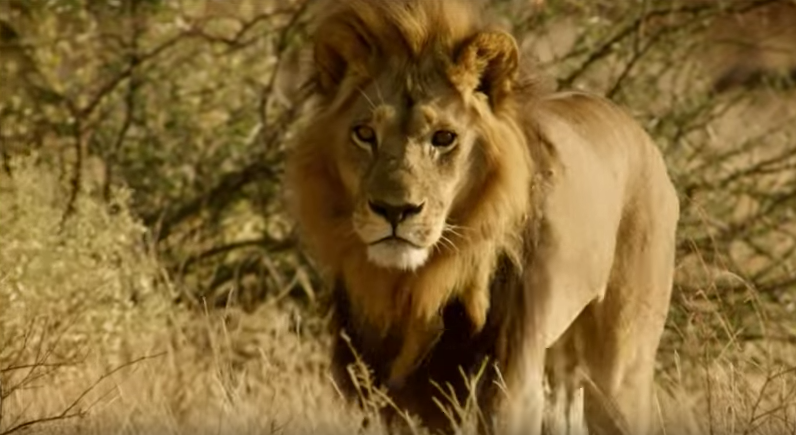

Five butch lionesses prowl the Moremi Game Reserve in Botswana. They have thick, bristling manes and guttural roars that can easily fool invaders or safari visitors into believing they are lions. But these lion queens actually use a pretty unusual hormonal trick.
Manes are typically a distinguishing characteristic of male lions that help attract female mates, just like the ostentatious feathers of peacocks or the antlers on a deer stag. Female lions very rarely sprout manes, or vocalize as much as males do. But scientists recently noticed a number of lionesses from the Moremi reserve had developed manes, and one was even roaring and mounting other females.
So how did these mama cats start lion about their sex? According to Luke Hunter, president of the global wild cat conservation organization Panthera, these females most likely have a high level of testosterone. Their testosterone may be increased because of aberrant sperm that gave female embryos some male characteristics, or because their mothers may have had high testosterone levels that increased their exposure to the hormones in the womb, he told New Scientist. Alternatively, the lionesses could be experiencing testosterone-induced hairiness simply because they are maturing, kind of like your grandmother who is beginning to grow a fuzzy chin. In either case, the testosterone would probably render these females infertile, according to Kathleen Alexander, a biologist at Virginia Tech in Blacksburg.
“While some of the maned lionesses were observed mating, none of them became pregnant, suggesting they are infertile, a known consequence of high levels of androgens such as testosterone in females,” Alexander told New Scientist. “The behavioral changes suggest this is likely the case.”
Another explanation may be that the lion population in the area has a genetic abnormality that causes the condition, especially if they have been isolated by seasonal flood waters that forced them to start inbreeding. “Given all five known maned females come from the Okavango region, there must be a genetic component in this population underlying the phenomenon,” Hunter said.
This isn’t the first case of lionesses growing manes though. In 2011, a 13-year old lioness named Emma, who was bred in captivity at the National Zoological Gardens of South Africa, stunned zookeepers when she began sprouting a mane. Biopsies of her ovaries revealed that she had the normal XX chromosomes of a female but another abnormality in her cells was resulting in high levels of testosterone.
No matter what is causing the Botswanan lionesses to start acting like lions, they still seem perfectly capable of surviving in the wild, Hunter noted. “Although the females are apparently infertile, they otherwise appear to live long, healthy lives. And from a conservation perspective, there is nothing to suggest the pattern is increasing or will ever be anything more than a rare, local phenomenon,” he said.
In fact, these unique females may be an asset to their pride. Because they mimic males so well, the maned lionesses can trick attacking animals and rivals into believing there are more males in the group, and therefore help defend a larger territory for the whole pride.
[via New Scientist]
